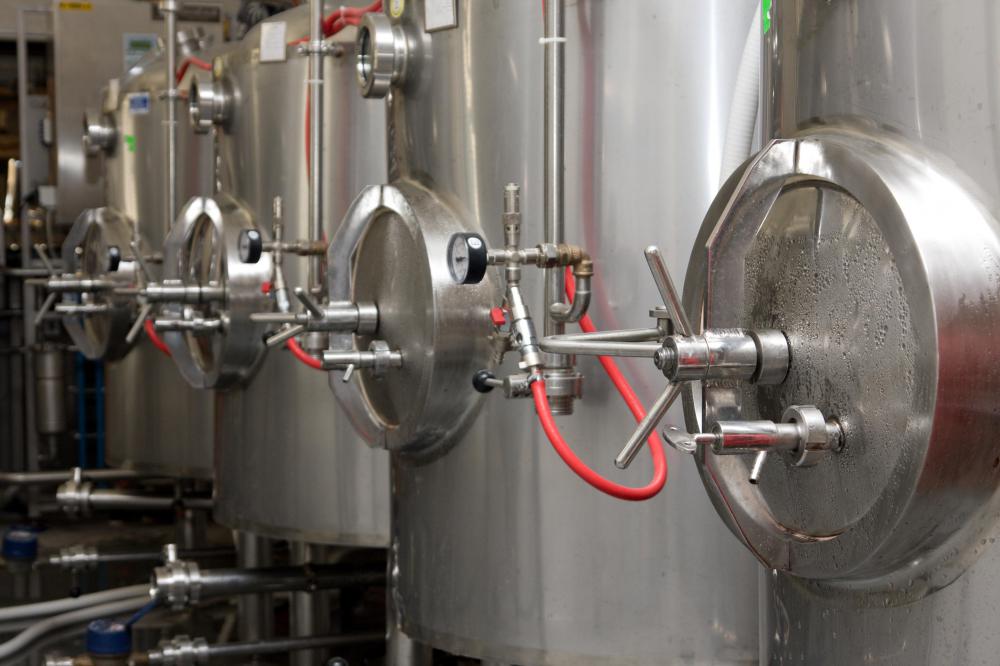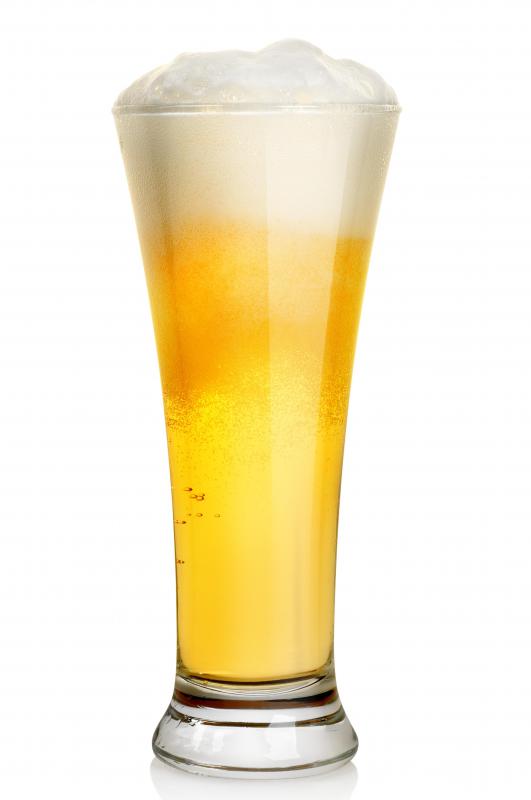At DelightedCooking, we're committed to delivering accurate, trustworthy information. Our expert-authored content is rigorously fact-checked and sourced from credible authorities. Discover how we uphold the highest standards in providing you with reliable knowledge.
What is Malt Beer?
Malt beer is made from malted grains, water, hops, and yeast. Barley, wheat and rye are the most common grains used for malting. Malts are used to assist the fermentation process in beer making. When grains are malted, a sugar is produced which then ferments into alcohol.
To make malt beer, the first step is to malt the grain. A grain such as barley is soaked in water for about five days. This forces the seed to germinate. As soon as germination begins, the grains are removed from the water and dried with hot air, usually in a kiln. This drying process usually takes place in a kiln. The amount of roast affects the darkness of the beer, with the lightest toasting producing light beer and a darkest producing stout.

Once the grains are dry, a process called mashing begins. The malted grains are sent through a masher that converts them into a sugary substance. Depending on the grain, this malt can have a sweet, nutty, toasty or even chocolaty flavor. The sugary malt is mixed with hot water to become "wort."
Next, this wort is boiled and hops are added. Hops are the dried flower cones of the hops vine plant, also called humulous lupus. These little flowers add bitterness to the beer, but not flavor.

After the hops have been boiled, the mixture runs through a machine that separates the liquids and solids. The liquid runs quickly through a cooling chamber and yeast is added. This fermenting adds the alcohol content and carbonation to the malt beer. Degrees of the cooling chamber along with the length of fermenting time produces various types of malt beer like ale, lager and stout.

The flavor of malt beer is influenced by the quality and type of ingredients. Flavoring can include anything from blueberries and apples to cinnamon and spices that add extra or unique flavors to the brew. Sugar substitutes like molasses can add a different flavor profile as well. The type of storage container can also change the flavor. Oak barrel beer will taste differently than beer stored in metal chambers.

The first documented evidence of malt beer making comes from 3500 BCE, but the process likely has its roots even earlier in history. At points in time in Egypt, beer was consumed more regularly than water since it had less of a chance of being contaminated. Many malt beers were originally used for making breads, while early drinkable malt beer was more syrupy than today's versions.
AS FEATURED ON:
AS FEATURED ON:

















Discussion Comments
I'm a professional brewmaster and would like to pitch in. Malts are used to produce alcohol. Malts give us sugar (maltose) that yeast converts into alcohol, in this case beer. If you roast your malt you can gain some color, depends on how much you roast. It will be amber, brown or black.
I am searching for the archetype of malted beer. Any suggestions?
Malt beer sounds like something special and exceptional, but most of my experience with malt beer has come in the form of 40oz bottles.
The town where I went to college had seemingly every variety of 40 for sale somewhere and they were all malted beers. The flavor was sweeter and the alcohol content was higher, in some cases much higher. Also, it should be noted, the flavor was usually terrible. This didn't stop us from drinking them, but when you were drinking malt beer you kind of felt like you were slumming it.
It really is complicated, but I prefer just a simple beer, without all the added bits and pieces for flavoring. Just grain, hops, and yeast is fine with me. I'm glad many breweries are now offering beers without preservatives and all the other added extras.
Still, even without additions the timing and ingredient quality is so important that two beers with identical ingredients can taste completely different.
It would be very interesting to try and get a homebrew beer right, although I suppose most people making malted beer at home would have to use a malt extract, and I wouldn't be happy about doing that.
It is so amazing how complex this procedure is. And the fact that people managed to make malted beer before the invention of sterilized, specialized equipment.
It makes sense that it came from the process of making bread. Sometimes when I'm drinking beer it almost feels like a meal. And how else could they have come up with such an involved process? I have a lot of respect for people who create home brew artisan beers, who have to do a lot of this work by hand, step by step, with every possibility that it might not even work at the end.
Plus, I enjoy their product!
Post your comments